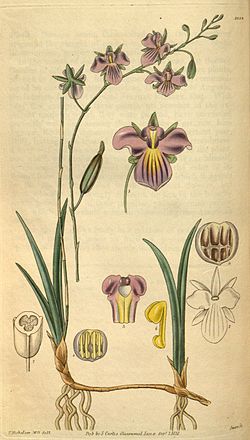| Tetramicra | |
|---|---|
 | |
| Tetramicra elegans 1831 illustration [1] | |
| Scientific classification | |
| Kingdom: | Plantae |
| Clade: | Tracheophytes |
| Clade: | Angiosperms |
| Clade: | Monocots |
| Order: | Asparagales |
| Family: | Orchidaceae |
| Subfamily: | Epidendroideae |
| Tribe: | Epidendreae |
| Subtribe: | Laeliinae |
| Genus: | Tetramicra Lindl. |
| Type species | |
| Cymbidium rigidum (syn of Tetramicra canaliculata ) | |
Tetramicra is a genus of flowering plants in the orchid family, Orchidaceae, native to the West Indies. [2] [3] Tetramicra canaliculata has also been reported from southern Florida, but these reports have been challenged. [4] Tetramicra is abbreviated Ttma. in the horticultural trade. [5]
Contents
Most species are terrestrial, (the exception being T. malpighiarum) and lacking pseudobulbs (with the exception of T. bulbosa), with rigid, linear, terete or triquetrous leaves and a terminal inflorescence consisting of a slender few- to several-flowered peduncle. Pollinia eight, 4 larger and four smaller.